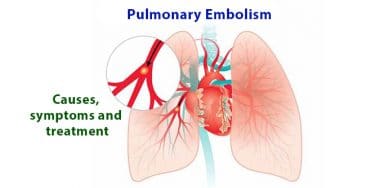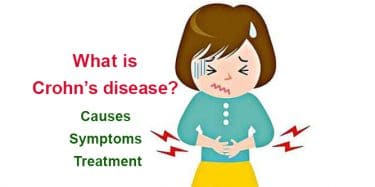Abdominal pain, is the pain caused by organs in the abdominal cavity between the chest and groin. It may be acute or chronic; mild or severe. The most common cause is digestive problems, and spontaneously resolves without medical intervention. However, severe abdominal pain can be a sign of a serious illness such as cancer or organ failure. Among various reasons are appendicitis, hernia, ulcer, gallbladder inflammation, food poisoning, pregnancy, Crohn’s disease, reflux, kidney stone, abdominal muscle damage, celiac, gynecological and vascular problems. Antacids, hot compresses and herbal solutions such as ginger, mint, fennel tea are good for mild abdominal pain. Sudden, severe or prolonged abdominal pain may require immediate intervention. In general, treatment depends on the underlying cause; may include changes in lifestyle and nutrition, or medication or surgery.
Table of Contents
What is abdominal pain?
Abdominal pain indicates discomfort in the abdominal cavity, which is delimited by the lower edge of the ribs and the pelvis. Abdomen consists of stomach, liver, gallbladder, spleen, pancreas, intestines, appendicitis, reproductive organs and important blood vessels. Pain originated from the lower lungs, kidneys, or pelvis can also be perceived like it is coming from the abdomen.
On the other hand, it is possible to feel the pain from the abdominal organs in different regions. For example, the pain of pancreatic inflammation may be felt on the back; symptoms of heart attack or pneumonia in the upper abdomen. The pain of acute cholecystitis begins in the right upper abdomen and spreads to the back.
The main causes of abdominal pain, also called stomach pain, are infection, inflammation, obstruction, organ death and bowel disorders. The type, location, severity and duration of pain are important for diagnosis.
Characteristics of abdominal pain
- Type: Intermittent, in waves, steady, severe, sharp, light, knife-like, cramped, twisted, penetrating
- Duration: Acute pain starts suddenly, lasts less than a week. Chronic pain may recur at periodic intervals for more than a few months.
- Location: Acute pancreatitis causes severe pain in the upper abdomen and upper back; spreading the pain towards the waist is typical.
- Top left: spleen growth
- Top right: gallbladder, hepatitis
- Bottom left: diverticulitis, ovarian cysts
- Bottom right: appendicitis, Crohn’s disease, hernia, right ovarian problems
- Upper abdomen: gastric ulcer, gastritis, pancreatitis, gallstones, heart attack, hepatitis, pneumonia
- Lower abdomen: urinary infections, cancer, gynecological problems, appendicitis, intestinal obstruction, ectopic pregnancy, menstrual pain, fibroids, endometriosis, pelvic inflammatory disease
- Abdomen general: traumatic injury, irritable bowel syndrome, urinary tract infection
- Increasing and decreasing factors: Pain is associated with positions, foods, bowel movements and stress. It may be worse after meals or while lying down; may be better after bowel movement or vomiting. Pain due to inflammation (appendicitis, diverticulitis, cholecystitis, pancreatitis) is aggravated by sneezing, coughing, any movement; patients prefer to stand still.
Causes of abdominal pain
Many acute and chronic diseases can cause abdominal pain. Possible causes are:
- Diarrhea, constipation, flatulence
- Stress
- Irritable bowel syndrome
- Food allergies, food poisoning, lactose intolerance
- Gastric influenza (gastroenteritis)
- Indigestion, acid reflux, gastritis, ulcer
- Diverticulitis, pancreatitis, appendicitis, hernia

- Abdominal aortic aneurysm
- Intestinal obstruction
- Cancers
- Gallbladder inflammation (cholecystitis), gallstones
- Crohn’s disease, ulcerative colitis
- Kidney stone
- Liver inflammation (hepatitis)
- Gastroesophageal reflux (esophagitis)
- Abdominal muscle injury
- Spleen growth
Sometimes it can be caused by problems in the chest or pelvic region:
- Menstrual cramps
- Endometriosis
- Pelvic inflammatory disease
- Ectopic pregnancy
- Torn ovarian cyst
- Urinary tract infections
- Heart attack
- Pneumonia, pulmonary embolism
- Ovarian inflammation
- Fibroids
Gastroenteritis (gastric influenza)
The most typical feature is hyperactive bowel sounds and cramps before diarrhea attacks. In addition to abdominal pain, nausea, vomiting, bloating and flatulence are observed after a meal. It is caused by bacteria or viruses; usually passes within a few days. Symptoms lasting more than 2 days may be indicative of an infection or intestinal inflammation.
Irritable bowel syndrome (IBS)
Increased abdominal pain after meals is chronic, because they have difficulty in digesting certain foods, which can take months, even years. Other common symptoms include flatulence, nausea, cramping, bloating; usually relaxes after bowel movement. Symptoms may mimic bowel obstruction, cancer, ulcers, appendicitis or gallbladder cramps.
Ulcers
It can cause chronic abdominal pain, bloating, indigestion, and weight loss. It may periodically be poor for weeks-months; following weeks or months it may be good. Common causes include H. pylori bacteria and excessive use of non-steroidal anti-inflammatory drugs.
Celiac disease
Celiac disease is an allergy to gluten, a protein found in many grains, which causes inflammation in the small intestine. It leads to malnutrition, weight loss and fatigue. Diarrhea, bloating, pain are common symptoms.
Abdominal pain symptoms
- Bloating, flatulence, belching
- Heartburn, nausea and vomiting after a meal, feeling sick, indigestion
- Constipation, diarrhea, weight loss
- Fever, chills, night sweats
- Muscle-joint pain
- Cramp waves due to contraction of intestinal muscles
Abdominal pain is a symptom, and may be associated with other symptoms. Pain-causing diseases can mimic each other, and the properties of pain can change over time. Right kidney infection may mimic acute cholecystitis; kidney stones mimic appendicitis or diverticulitis.
Types of abdominal pain
- Visceral pain: It is described in the form of cramps (colic), and as flammable, caustic, corrosive. It suddenly appears, feeling like a severe muscle spasm. It is typically a deep pain that is not fully understood where it comes form. Sweating, nausea, vomiting, diarrhea often accompany pain. Patient constantly tries to find the right position to relieve the pain. Flatulence may be associated with swelling or complications in the reproductive organs.
- Somatic pain: It is severe, and localized precisely. It increases with coughing or moving; it is limited to a region of the abdomen, and is continuous. Appendicitis refers to inflammation or disease in a particular organ, such as gall bladder, stomach; patient feels the pain in the right lower quadrant and tries to lie still.
- Reflected pain: Pain is felt away from the problematic organ; it may be felt in the skin or deeper tissues, but is well localized. It has the properties of visceral and somatic pain.
When to go to the doctor for abdominal pain?
If mild abdominal pain improves within 24-48 hours, you do not need to see a doctor. However, acute or chronic abdominal pain is a symptom of conditions requiring treatment. See a doctor if there is:
- Abdominal pain lasting 1 week or more
- Bloating lasting more than 2 days
- Urine burning or pain
- Diarrhea lasting more than 5 days
- Prolonged vaginal bleeding
- Unexplained appetite and weight loss
- Pain after meal
- Pain awakening at night
- Long-term constipation
- If the pain is exacerbated and localized
Is abdominal pain dangerous?
The type of pain may not always reflect the severity of the condition. For example, viral gastroenteritis may cause severe abdominal pain; as colon cancer or early appendicitis can only cause mild pain. Sudden and unexpected abdominal pain, starting with or after a meal, should be considered as a medical emergency, especially if it is concentrated in a particular area accompanied by diarrhea.
Other conditions seen with abdominal pain that require immediate treatment:
- Chest, neck, back, shoulder pain
- Bloody stools, vaginal bleeding, blood vomiting
- Fainting
- Inability to urinate
- Pain occurred during pregnancy or as a result of injury
- High fever with sudden and severe pain
- Yellowing of skin or eyes
- Severe tenderness in the abdomen
- Pain that worsens rapidly
- Difficulty in breathing and movement
- Nausea, vomiting
Sudden stomach cramps with diarrhea
It may indicate viral or bacterial infection (gastroenteritis) that needs to heal within a few days. It may be caused by close contact with an infected person or food poisoning. Recurrent cramping and diarrhea attacks are a symptom of a chronic disease such as irritable bowel syndrome (IBS). Fever, diarrhea or rectal bleeding indicates inflammation in the intestines.
Acute abdominal pain
Sudden severe pain may be indicative of conditions requiring immediate surgery because of interruption of blood flow to the colon (ischemia), obstruction of the bile duct, appendicitis, bleeding in the stomach, and kidney stones.
Chronic abdominal pain
The cause is usually not serious, but manageable. Possible causes include bloating, diarrhea, constipation, urinary tract infection, menstrual cramps. When you go to the toilet, it usually relaxes.
What kind of doctor do I see for abdominal pain?
Abdominal pain can be treated by various doctors depending on the cause. It is usually best to start the diagnostic process with an internal medicine doctor. Depending on the exact diagnosis, you will be referred to a surgeon, gastroenterologist or gynecologist.
Home remedies for abdominal pain
Abdominal pain, which may be caused by digestion and constipation problems, can be relieved by home care within hours:
- Place a hot water bag on your stomach and feet.
- Spend time in the toilet and don’t avoid bowel movements.
- Abdominal pain is sometimes caused by gastric acids moving up the esophagus. Sitting upright in an relaxed position or taking antacids may reverse this.
- Avoid solid and acidic foods for the first few hours. Then take plenty of liquid in small portions. Eat easily digestible food such as crackers, rice, oatmeal, bananas, boiled potatoes, apple puree, toast.
- Take a hot shower or bath.
- Gently massage your stomach in a circular motion.
- Try to sleep. The body often heals itself during sleep.
- Stretching relaxes the body and increases circulation in the digestive tract.
Treatment of abdominal pain
Over-the-counter medications for abdominal pain
According to the personal history and physical examination, an idea about the cause of pain can be obtained. In other cases, diagnostic tests such as blood-urine-fecal analysis, x-ray, CT scan and endoscopy are used to confirm or exclude the diagnosis. Inflammation, reflux or ulcer are treated with medicine; infections are treated with antibiotics; abdominal pain caused by certain foods or drinks is treated with changes in personal behavior. Treatment of the patient depends on the condition that causes abdominal pain:
- Antacids: In case of indigestion, to remove acidity of the stomach, antacids or activated carbon tablets can be taken without prescription.
- Medication: No medication is required for the treatment of simple viral gastroenteritis. Other causes may require antispasmodics, antimicrobials, H2 blockers, nitrates or morphine. Another approach is to use pain modifying drugs to change the way that pain signals are processed in the spinal cord and brain. Commonly used are antidepressants such as amitriptyline or trazodone at very low doses. Painkillers such as aspirin and ibuprofen should not be used for undiagnosed abdominal pain, they may worsen it.
- Fasting: You are asked not to eat or drink anything until the cause of the pain is known. This is to prevent worsening of certain medical conditions or to prepare for surgery.
- Surgery: In case of hernia, abdominal adhesions, cholecystitis, appendicitis, bowel obstruction or perforation of the stomach, the patient can be operated directly.
What’s good for abdominal pain?
- If the cause of the pain is ulcer, avoid nicotine, caffeine and alcohol; if it is the gallbladder problem, avoid greasy and fried foods.
- Drink half a glass of water with half a teaspoon of carbonate.
- Yogurt can relieve pain with its probiotic effect.
- Drink a glass of water with 1 tablespoon apple cider vinegar and honey.
- Vomiting can help remove pain-causing acid.
- Stress may be the cause of abdominal pain; meditating or soft music can help relax.
- Lying down on the stomach and applying pressure with a pillow to the abdomen can alleviate the pain.
- If the cause of abdominal pain is indigestion, drinking 1 cup of hot water stirred with 1 lemon juice helps digestion.
Herbal remedies for abdominal pain
Ginger, mint, licorice root, chamomile, fennel seeds, sage, yarrow, thyme with their antimicrobial, antibacterial and antioxidant properties help stomach problems by mobilizing bowels.
Herbal teas for abdominal pain
- Ginger tea relaxes muscles, relieves stomach cramps and reduces inflammation. Peel the ginger and brew by adding 5-6 slices to a cup of hot water.
- Mint tea has a pain relief effect; is good for nausea, vomiting and abdominal pain. You can boil and drink a pinch of dried or fresh mint with half a lemon.
- Chamomile tea relaxes the muscles in the digestive system and reduces the pressure on the intestines, it is good for stress-induced abdominal pain. After infusing 1-2 teaspoons chamomile in a cup of boiled water for 5 minutes, strain and drink it.
- Fennel tea is good for abdominal pain caused by indigestion by relaxing the digestive system. Brew 5 minutes by adding 1 teaspoon of fennel seeds to 1 cup of hot water.
- Thyme tea is good for stomach cramps, relieves flatulence. Brew 5 minutes by adding 1 pinch thyme to 1 cup of hot water.
Abdominal pain in pregnancy
The enlarged uterus during pregnancy pushes the organs in the lower abdomen, making it difficult to examine, changes symptoms and disrupts the natural mechanisms that localize the infection. The most common causes of abdominal pain in pregnancy are problems such as acute appendicitis, cholecystitis, pyelonephritis, ovarian torsion, ovarian cyst rupture. In diseases of the abdominal organs, the risk of loss of the baby is related to the severity of the disease rather than the treatment administered. Therefore, early diagnosis and treatment is very important.




